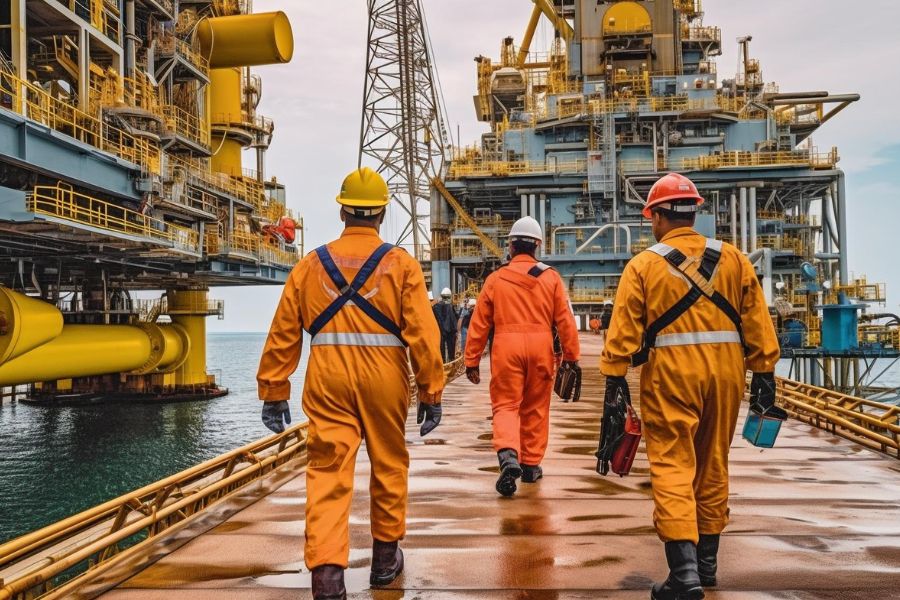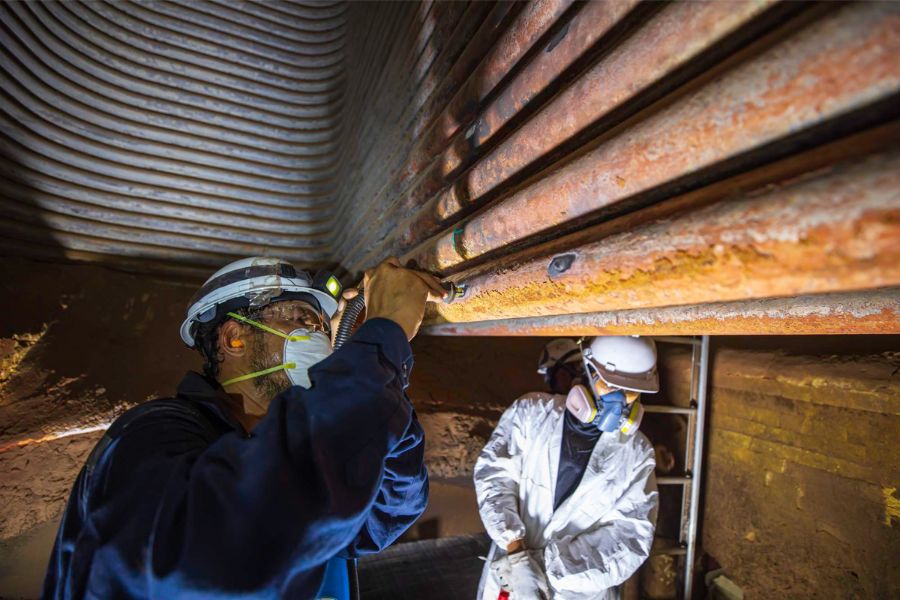Preserving Petroleum: Navigating Corrosion Challenges through Cathodic Protection Strategies and Training Solutions
Introduction
The introduction sets the stage for the exploration of cathodic protection strategies in the context of preserving petroleum infrastructure. It aims to provide a brief overview of the importance of safeguarding petroleum assets against corrosion challenges, emphasizing the critical role that cathodic protection plays in this regard. The introduction will touch upon the significance of the petroleum industry, the economic implications of corrosion, and the need for effective protective measures. By introducing the central theme of cathodic protection, the stage is set for a comprehensive exploration of strategies and training solutions.
Overview of Petroleum Industry
The petroleum industry is a complex and multifaceted sector encompassing the exploration, extraction, refining, and distribution of hydrocarbons. This industry plays a pivotal role in powering economies globally by providing the energy required for transportation, manufacturing, and various other sectors. Petroleum, in the form of crude oil, is a finite natural resource that undergoes a series of processes to yield a range of products, including gasoline, diesel, jet fuel, and various petrochemicals.
The entire petroleum supply chain involves intricate infrastructure, from drilling platforms and pipelines to refineries and storage facilities. Pipelines, in particular, are critical components for the transportation of oil and gas over vast distances. However, these structures are highly susceptible to corrosion due to exposure to corrosive substances and environmental factors.
To safeguard these valuable assets, the petroleum industry employs various corrosion control methods, with cathodic protection being a standout solution. Cathodic protection systems are strategically implemented on pipelines, storage tanks, and other metallic structures to counteract the corrosive forces, ensuring the sustained functionality of equipment and preventing costly disruptions.
Importance of Corrosion Control in Petroleum
Corrosion control plays a pivotal role in ensuring the integrity and longevity of infrastructure within the petroleum industry. The harsh and corrosive environment to which petroleum facilities are exposed can lead to significant material degradation, threatening the reliability and safety of operations. Corrosion is a natural process that can result in the deterioration of metals, pipelines, and storage tanks, ultimately leading to leaks, spills, and infrastructure failures.
In the context of the petroleum industry, where vast quantities of hydrocarbons are extracted, transported, and processed, the consequences of corrosion can be severe. Not only does corrosion compromise the structural integrity of equipment and facilities, but it also poses environmental and safety risks. Controlling corrosion is, therefore, paramount to ensuring the efficient and secure functioning of petroleum infrastructure.
Cathodic protection emerges as a crucial technique in the fight against corrosion within the petroleum sector. By implementing effective cathodic protection systems, the industry can mitigate the corrosive effects on metal surfaces, significantly extending the lifespan of critical assets. This method involves the application of a direct electrical current to the metal structure, creating a protective environment that hinders the corrosion process.
Pain Points in Petroleum Corrosion Control
Petroleum corrosion control presents numerous challenges that can significantly impact the integrity of infrastructure within the oil and gas industry. The foremost pain points in this domain revolve around the relentless nature of corrosion, which poses a constant threat to pipelines, storage tanks, and other critical components of petroleum facilities. The corrosive environment, often exacerbated by factors like moisture, harsh chemical substances, and soil conditions, accelerates the degradation of metal surfaces.
The challenges also include the complexity of identifying and mitigating corrosion in various components and systems. Detection of corrosion is often challenging due to its concealed nature, leading to potential surprises and unplanned downtime. This necessitates the implementation of proactive corrosion control measures to prevent structural deterioration and maintain the operational efficiency of petroleum infrastructure.
Corrosion Impact on Infrastructure
Corrosion poses a severe threat to the infrastructure associated with petroleum production, transportation, and storage. Metal degradation can compromise the structural integrity of pipelines, leading to leaks and spills. In addition to the physical damage, corrosion can also affect the functionality of valves, pumps, and other crucial equipment.
The impact is not limited to the visible aspects of infrastructure; it extends to the overall safety and reliability of the entire petroleum system. Corrosion-induced failures can result in catastrophic incidents, posing risks to human safety, environmental well-being, and causing disruptions in the supply chain. Understanding the far-reaching consequences of corrosion underscores the importance of adopting effective protective measures to preserve the longevity and reliability of petroleum infrastructure.
Economic Consequences
The economic consequences of corrosion in the petroleum industry are multifaceted and substantial. Direct costs include expenses related to repairing or replacing corroded infrastructure, conducting emergency response activities in the event of a failure, and addressing environmental remediation efforts resulting from leaks or spills.
Indirect costs are equally significant, encompassing the financial ramifications of unscheduled downtime, loss of production, and damage to a company’s reputation. The economic impact extends beyond individual companies to affect the industry as a whole, influencing supply chains, market dynamics, and potentially leading to increased prices for end consumers.
Addressing the economic consequences of corrosion requires a strategic approach that not only focuses on reactive measures but also emphasizes preventive strategies, such as the implementation of cathodic protection systems. These systems play a crucial role in mitigating corrosion, extending the lifespan of infrastructure, and ultimately minimizing the economic burdens associated with corrosion-related incidents.
Environmental and Safety Concerns
The petroleum industry is under increasing scrutiny regarding its environmental and safety practices. Corrosion not only jeopardizes the structural reliability of petroleum infrastructure but also poses environmental risks. Leaks resulting from corroded pipelines can lead to soil and water contamination, threatening ecosystems and public health. Therefore, effective corrosion control measures are integral to minimizing the environmental impact of petroleum operations.
Cathodic protection emerges as a key component in addressing environmental and safety concerns. By implementing this electrochemical method, the industry can proactively safeguard against corrosion-induced leaks and spills. Training solutions that educate personnel on the importance of cathodic protection contribute to a safety-conscious culture within petroleum facilities, promoting adherence to environmental standards and minimizing the ecological footprint.
Regulatory Compliance Challenges
As environmental regulations become more stringent, the petroleum industry faces increasing challenges in complying with these standards. Regulatory bodies set forth guidelines to ensure the safe and environmentally responsible operation of oil and gas facilities. Corrosion control measures, including cathodic protection, are often integral components of these regulations.
Navigating regulatory compliance challenges requires a comprehensive understanding of corrosion prevention methods and the implementation of effective cathodic protection strategies. Training solutions play a pivotal role in ensuring that industry professionals are well-versed in the regulatory landscape and equipped to implement the necessary corrosion control measures. Adhering to these regulations not only mitigates legal risks but also contributes to the industry’s reputation as a responsible steward of the environment.
Solutions in Corrosion Control
Corrosion poses a significant threat to the integrity of petroleum infrastructure, leading to costly repairs and potentially hazardous situations. To counteract this, various solutions in corrosion control are employed within the petroleum industry. These solutions range from protective coatings to corrosion-resistant materials. However, one of the most effective strategies is the implementation of cathodic protection.
Cathodic protection serves as a robust defense mechanism against corrosion, preserving the structural integrity of metal components in contact with corrosive environments. This section will explore the different corrosion control methods, emphasizing the unique role that cathodic protection plays in mitigating corrosion-related risks in petroleum facilities.
Overview of Cathodic Protection
Cathodic protection is a corrosion prevention technique widely adopted in the petroleum industry. This section provides a comprehensive overview of cathodic protection, explaining its fundamental principles and mechanisms. It will delve into the two primary types of cathodic protection: galvanic and impressed current systems.
Galvanic cathodic protection involves the use of sacrificial anodes, typically made of zinc or aluminum, which corrode in place of the protected metal. Impressed current systems, on the other hand, employ an external power source to supply the necessary electrical current for protection. This overview will also touch upon the criteria for selecting the appropriate cathodic protection system based on the specific conditions of the petroleum infrastructure.
Benefits of Cathodic Protection
Cathodic protection offers a myriad of benefits, making it a preferred corrosion control strategy in the petroleum industry. This section will thoroughly examine these advantages, emphasizing the role of cathodic protection in extending the lifespan of critical assets, reducing maintenance costs, and ensuring the safe and efficient operation of petroleum facilities.
The benefits discussed will include corrosion rate reduction, increased asset reliability, and enhanced safety standards. Additionally, the section will explore how cathodic protection contributes to environmental sustainability by minimizing the environmental impact of corrosion-related incidents. Through a detailed analysis of these benefits, readers will gain a profound understanding of why cathodic protection is an indispensable element in preserving petroleum infrastructure.
Corrosion Inhibition Technologies
In addition to Cathodic Protection, corrosion inhibition technologies play a crucial role in preserving petroleum infrastructure. These technologies are designed to impede the corrosion process at a chemical level, complementing the electrochemical protection provided by CP.
One widely used corrosion inhibition method involves the application of corrosion inhibitors, which are chemicals that, when introduced into the petroleum system, form a protective layer on metal surfaces. This layer acts as a barrier, preventing corrosive elements from interacting with the metal. These inhibitors can be categorized into different types, such as anodic, cathodic, and mixed inhibitors, each tailored to specific corrosion scenarios.
Furthermore, the petroleum industry explores advanced coatings and materials engineered to resist corrosion. These materials, when applied to equipment surfaces, create a barrier against corrosive elements, enhancing the overall durability of the infrastructure.
Importance of Training in Cathodic Protection
Cathodic protection plays a crucial role in preserving petroleum infrastructure by mitigating corrosion, a persistent threat in the oil and gas industry. Effective implementation of cathodic protection strategies is contingent upon well-trained professionals who understand the intricacies of corrosion mechanisms, the principles of cathodic protection, and the specific challenges posed by diverse petroleum environments.
Training in cathodic protection is essential to equip personnel with the knowledge and skills required to identify, assess, and address corrosion issues proactively. Comprehensive training programs cover topics such as corrosion fundamentals, electrochemical processes, material selection, and the application of various cathodic protection techniques. This knowledge empowers professionals to make informed decisions, ensuring the optimal functioning and longevity of critical infrastructure components.
Moreover, well-trained individuals are better equipped to design, install, and maintain cathodic protection systems effectively. They can navigate complex scenarios, such as varying soil resistivity and corrosive conditions, to implement tailored solutions that provide long-term corrosion prevention. The investment in training pays off in the form of enhanced infrastructure reliability, reduced maintenance costs, and a safer operational environment.
Understanding Cathodic Protection Courses
Cathodic protection courses are designed to impart comprehensive knowledge and practical skills necessary for professionals involved in safeguarding petroleum infrastructure from corrosion. These courses cater to a diverse audience, including engineers, technicians, and corrosion specialists, offering a structured curriculum that covers fundamental principles, advanced techniques, and emerging trends in cathodic protection.
The courses typically begin with an introduction to corrosion science, providing participants with a solid foundation in understanding the electrochemical processes that lead to corrosion. Subsequent modules delve into the principles of cathodic protection, exploring different methods such as sacrificial anode systems and impressed current systems. Practical aspects, including system design, installation, and monitoring, are emphasized to ensure that participants are well-prepared to implement cathodic protection solutions in real-world scenarios.
Continuous advancements in cathodic protection technologies are also covered, ensuring that participants stay abreast of the latest developments in the field. The courses aim to foster a proactive approach to corrosion management, emphasizing preventive measures and predictive maintenance strategies.
Conclusion
In conclusion, the imperative task of “Preserving Petroleum: Navigating Corrosion Challenges through Cathodic Protection Strategies and Training Solutions” underscores the paramount importance of addressing corrosion issues in the petroleum industry. The pervasive impact of corrosion on infrastructure, especially in the context of petroleum facilities, necessitates a comprehensive approach. The key focal point, cathodic protection, emerges as a pivotal strategy in safeguarding critical assets against the corrosive forces that threaten their integrity. As industries grapple with the complexities of corrosion, it becomes evident that a well-rounded understanding and implementation of cathodic protection strategies are vital for long-term sustainability.
In the pursuit of effective corrosion mitigation, the role of education and training solutions cannot be overstated. Organizations such as the Corcon Institute of Corrosion play a crucial role in advancing the knowledge and expertise required to combat corrosion challenges. Specifically, their commitment to offering coating inspector courses equips professionals with the skills needed to assess, implement, and maintain cathodic protection systems effectively. By fostering a culture of continuous learning and innovation, institutions like Corcon Institute contribute significantly to the broader goal of preserving petroleum infrastructure.
In essence, the symbiotic relationship between cathodic protection strategies and comprehensive training solutions, as exemplified by the initiatives of the Corcon Institute, charts a course toward a more resilient and sustainable future for the petroleum industry. As stakeholders unite in their dedication to combat corrosion, the amalgamation of advanced protection techniques and a skilled workforce promises a landscape where the preservation of petroleum resources is not only a goal but a steadfast reality.
FAQs
Q1: Why is corrosion control crucial in the petroleum industry?
Answer: Corrosion control is vital in the petroleum industry due to the harsh environments to which facilities are exposed. Corrosion can lead to material degradation, posing risks to infrastructure integrity, safety, and environmental well-being. Effective corrosion control measures, such as cathodic protection, are essential to ensure the reliable and secure operation of petroleum assets.
Q2: What role does cathodic protection play in combating corrosion in the petroleum sector?
Answer: Cathodic protection is a key technique in the fight against corrosion in the petroleum industry. By applying a direct electrical current to metal structures, it creates a protective environment that hinders the corrosion process. This method significantly extends the lifespan of critical assets like pipelines and storage tanks, ensuring the sustained functionality of equipment and preventing costly disruptions.
Q3: How does corrosion impact the economics of the petroleum industry?
Answer: Corrosion in the petroleum industry results in substantial direct and indirect economic consequences. Direct costs include repairing or replacing corroded infrastructure and conducting emergency response activities. Indirect costs involve unscheduled downtime, loss of production, and damage to a company’s reputation. Mitigating these economic burdens requires strategic approaches, including the implementation of cathodic protection systems.
Q4: What are the environmental and safety concerns associated with corrosion in the petroleum industry?
Answer: Corrosion in the petroleum industry poses environmental risks, leading to soil and water contamination through leaks and spills. Additionally, corrosion-induced failures can threaten ecosystems, public health, and cause disruptions in the supply chain. Cathodic protection emerges as a crucial component in addressing these concerns by proactively safeguarding against corrosion-induced incidents.
Q5: Why is training essential in cathodic protection for the petroleum industry?
Answer: Training is crucial in cathodic protection as it equips professionals with the knowledge and skills needed to proactively address corrosion challenges. Well-trained individuals can design, install, and maintain cathodic protection systems effectively, contributing to enhanced infrastructure reliability, reduced maintenance costs, and a safer operational environment. Training also ensures compliance with environmental regulations and fosters a proactive approach to corrosion management.
Image Reference: Freepik
Disclaimer: All trademarks, logos, and brand names are the property of their respective owners. All company, product, and service names used in this website are for identification purposes only. Use of these names, trademarks, and brands does not imply endorsement.











